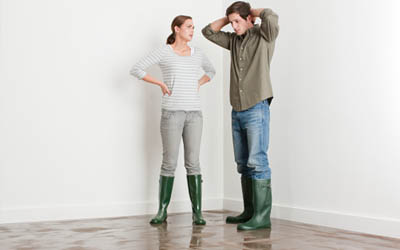HOW TO CLEAN UP AFTER A FLOOD
Flood cleanup can be a daunting task, but it’s a crucial job once you’re able to safely enter your home. Before you begin, consider the following tips when it comes to flood cleanup.
Take Flood Safety Precautions
A flooded home can pose a number of risks. When you return home, the Federal Emergency Management Agency (FEMA) advises not to wade in standing water, which might be contaminated and contain debris.
Electricity and gas can also bring risks. Never touch wet electrical equipment or any electrical equipment while you are standing in water, FEMA says. If it’s safe to turn off the electricity, do so to help prevent an electric shock. And, if it’s dark, use only a flashlight to guide you. Gas may be trapped inside your home, so it’s important to avoid using open flames such as lighters or matches.
Remove Standing Water
Floodwater can bring contaminants such as bacteria into your home. The Environmental Protection Agency (EPA) says it’s important to remove standing water as soon as you can. A wet vacuum can help remove water from floors as well as carpeting.
Determine What to Keep
While you can typically clean and keep items made from hard material, such as hard plastic, glass and metal, it’s important to remove and dispose of materials that soaked up floodwater.
The CDC suggests throwing out items like carpeting, mattresses, upholstered furniture, stuffed animals and books that you can’t quickly clean and dry to help prevent mold from growing.
Many belongings that were exposed to floodwater may be able to be used again if cleaned properly, according to the EPA. Products like Concrobium Mold Control can eliminate mold spores and also remove odors from a wide variety of surfaces and even clothing. Be sure to follow the directions on the label for best results.
Water removal and cleaning are just a couple of tasks in the flood cleanup process. It’s also important to absorb remaining moisture and remove mold on and behind surfaces.

